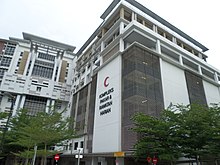Mark Douglas Britnell is an English business executive. He is a senior partner at the professional services firm KPMG and a global healthcare expert. He was the chairman and senior partner for healthcare, government and infrastructure at KPMG International until September 2020.

Health care in Saudi Arabia is a national health care system in which the government provides free universal healthcare coverage through a number of government agencies. There is also a growing role and increased participation from the private sector in the provision of health care services. Saudi Arabia has been ranked among the 26 best countries in providing high quality healthcare.
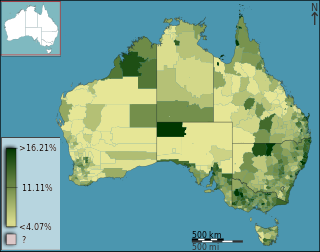
Health care in Australia operates under a shared public-private model underpinned by the Medicare system, the national single-payer funding model. State and territory governments operate public health facilities where eligible patients receive care free of charge. Primary health services, such as GP clinics, are privately owned in most situations, but attract Medicare rebates. Australian citizens, permanent residents, and some visitors and visa holders are eligible for health services under the Medicare system. Individuals are encouraged through tax surcharges to purchase health insurance to cover services offered in the private sector, and further fund health care.
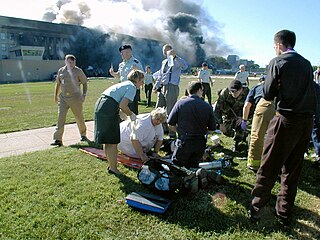
Disaster medicine is the area of medical specialization serving the dual areas of providing health care to disaster survivors and providing medically related disaster preparation, disaster planning, disaster response and disaster recovery leadership throughout the disaster life cycle. Disaster medicine specialists provide insight, guidance and expertise on the principles and practice of medicine both in the disaster impact area and healthcare evacuation receiving facilities to emergency management professionals, hospitals, healthcare facilities, communities and governments. The disaster medicine specialist is the liaison between and partner to the medical contingency planner, the emergency management professional, the incident command system, government and policy makers.
Healthcare in Algeria consists of an established network of hospitals, clinics, and dispensaries. The government provides universal health care.
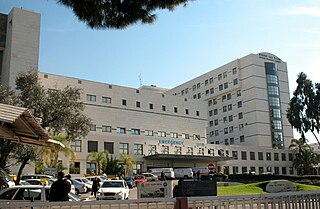
Healthcare in Israel is universal and participation in a medical insurance plan is compulsory. All Israeli residents are entitled to basic health care as a fundamental right. The Israeli healthcare system is based on the National Health Insurance Law of 1995, which mandates all citizens resident in the country to join one of four official health insurance organizations, known as Kupat Holim which are run as not-for-profit organizations and are prohibited by law from denying any Israeli resident membership. Israelis can increase their medical coverage and improve their options by purchasing private health insurance. In a survey of 48 countries in 2013, Israel's health system was ranked fourth in the world in terms of efficiency, and in 2014 it ranked seventh out of 51. In 2020, Israel's health system was ranked third most efficient in the world. In 2015, Israel was ranked sixth-healthiest country in the world by Bloomberg rankings and ranked eighth in terms of life expectancy.

Healthcare in Singapore is under the purview of the Ministry of Health of the Government of Singapore. It mainly consists of a government-run publicly funded universal healthcare system as well as a significant private healthcare sector. Financing of healthcare costs is done through a mixture of direct government subsidies, compulsory comprehensive savings, national healthcare insurance, and cost-sharing.
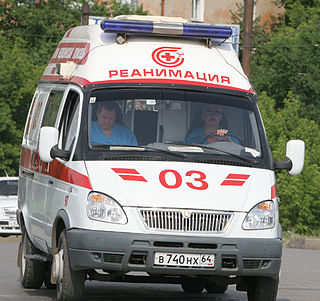
Healthcare in Russia is provided by the state through the Federal Compulsory Medical Insurance Fund, and regulated through the Ministry of Health. The Constitution of the Russian Federation has provided all citizens the right to free healthcare since 1993. In 2008, 621,000 doctors and 1.3 million nurses were employed in Russian healthcare. The number of doctors per 10,000 people was 43.8, but only 12.1 in rural areas. The number of general practitioners as a share of the total number of doctors was 1.26 percent. There are about 9.3 beds per thousand population—nearly double the OECD average.

Indonesia has drastically improved its health care in the past decade. Government expenditure on healthcare was about 3.1% of its total gross domestic product in 2018.

Healthcare in South Korea is universal, although a significant portion of healthcare is privately funded. South Korea's healthcare system is based on the National Health Insurance Service, a public health insurance program run by the Ministry of Health and Welfare to which South Koreans of sufficient income must pay contributions in order to insure themselves and their dependants, and the Medical Aid Program, a social welfare program run by the central government and local governments to insure those unable to pay National Health Insurance contributions. In 2015, South Korea ranked first in the OECD for healthcare access. Satisfaction of healthcare has been consistently among the highest in the world – South Korea was rated as the second most efficient healthcare system by Bloomberg. Health insurance in South Korea is single-payer system. The introduction of health insurance resulted in a significant surge in the utilization of healthcare services. Healthcare providers are overburdened by low reimbursement rates.
Healthcare in Finland consists of a highly decentralized three-level publicly funded healthcare system and a much smaller private sector. Although the Ministry of Social Affairs and Health has the highest decision-making authority, specific healthcare precincts are responsible for providing healthcare to their residents as of 2023.

The healthcare system of New Zealand has undergone significant changes throughout the past several decades. From an essentially fully public system based on the Social Security Act 1938, reforms have introduced market and health insurance elements primarily since the 1980s, creating a mixed public-private system for delivering healthcare.

Healthcare in Denmark is largely provided by the local governments of the five regions, with coordination and regulation by central government, while nursing homes, home care, and school health services are the responsibility of the 98 municipalities. Some specialised hospital services are managed centrally.
Examples of health care systems of the world, sorted by continent, are as follows.
According to the Malaysia Healthcare Travel Council (MHTC), Malaysia reportedly received 641,000 foreign patients in 2011, 728,800 in 2012, 881,000 in 2013, 882,000 in 2014, 859,000 in 2015, and 921,000 in 2016. Malaysia's medical tourism statistics derive from the reported numbers of all foreign patients treated by MHTC-endorsed medical facilities. These figures encompass all registered patients with a foreign passport, which by default also encompass expatriates, migrants, business travellers, and holiday-makers for whom health care may not be the main motive for their stay. The number of MHTC-endorsed medical facilities in Malaysia has increased over the years, playing a role in increasing the official figures on foreign patients. Malaysia is listed in the top 10 tourism destinations in the world by Patients Beyond Borders.

In the past, Kosovo’s capabilities to develop a modern health care system were limited. Low GDP during 1990 worsened the situation even more. However, the establishment of the Faculty of Medicine in the University of Pristina marked a significant development in health care. This was also followed by launching different health clinics which enabled better conditions for professional development.
American Well Corporation, doing business as Amwell, is a telemedicine company based in Boston, Massachusetts, that connects patients with doctors over secure video. Amwell sells its platform as a subscription service to healthcare providers to put their medical professionals online and its proprietary software development kits, APIs, and system integrations enable clients to embed telehealth into existing workflows utilized by providers and patients.
Healthcare standards in Qatar are generally high. Qatari citizens are covered by a national health insurance scheme, while expatriates must either receive health insurance from their employers, or in the case of the self-employed, purchase insurance. Qatar's healthcare spending is among the highest in the Middle East, with $4.7 billion being invested in healthcare in 2014. This was a $2.1 billion increase from 2010. The premier healthcare provider in the country is the Hamad Medical Corporation, established by the government as a non-profit healthcare provider, which runs a network of hospitals, an ambulance services, and a home healthcare service, all of which are accredited by the Joint Commission.
Exercise Cygnus was a three-day simulation exercise carried out by the UK Government in October 2016 to estimate the impact of a hypothetical H2N2 influenza pandemic on the United Kingdom. It aimed to identify strengths and weaknesses within the United Kingdom health system and emergency response chain by putting it under significant strain, providing insight on the country's resilience and any future ameliorations required. It was conducted by Public Health England representing the Department of Health and Social Care, as part of a project led by the "Emergency Preparedness, Resilience and Response Partnership Group". Twelve government departments across Scotland, Wales and Northern Ireland, as well as local resilience forums (LRFs) participated. More than 950 workers from those organisations, prisons and local or central government were involved during the three-day simulation, and their ability to cope under situations of high medical stress was tested.

The COVID-19 pandemic has impacted hospitals around the world. Many hospitals have scaled back or postponed non-emergency care. This has medical consequences for the people served by the hospitals, and it has financial consequences for the hospitals. Health and social systems across the globe are struggling to cope. The situation is especially challenging in humanitarian, fragile and low-income country contexts, where health and social systems are already weak. Health facilities in many places are closing or limiting services. Services to provide sexual and reproductive health care risk being sidelined, which will lead to higher maternal mortality and morbidity. The pandemic also resulted in the imposition of COVID-19 vaccine mandates in places such as California and New York for all public workers, including hospital staff.
